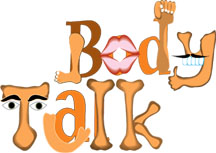
Skeleton:
The structure that holds us together
Have you ever seen a real human skeleton? If you have been to a
science exhibition or a museum, you definitely would have. Today, we
will be discussing the human skeleton.
The human skeleton is made of individual or joined bones, supported
and supplemented by a structure of ligaments, tendons, muscles,
cartilage and other organs. The skeleton is not unchanging; it changes
composition over a lifespan.
 At the beginning, a foetus has no hard skeleton - bones form
gradually during the nine months in the womb. At birth, all bones will
have formed, but a newborn baby has more bones than an adult. At the beginning, a foetus has no hard skeleton - bones form
gradually during the nine months in the womb. At birth, all bones will
have formed, but a newborn baby has more bones than an adult.
On average, an adult human has 206 bones (according to Gray's
Anatomy, but the number can vary slightly from individual to
individual). A baby is born with approximately 270 bones! How does a
baby have more bones than an adult, and where do the bones disappear?
Though at birth a baby has a number of small bones, they fuse
together during growth. They leave pockets of cartilage to allow more
growth. The sacrum (the bone at the base of the spine) consists of six
bones, which are separated at birth, but fuse together into a solid
structure in later years. Growing is usually completed between the ages
of 12 and 14. This means that the bones have no pockets of cartilage
left, so there is no material left to allow more growth.
Not all bones are interconnected directly. There are six bones (three
on each side) in the middle ear that are joined only with each other.
Another bone, the hyoid bone in the neck, does not touch any other bones
in the body, and is supported only by muscles.
The longest and heaviest bone in the body is the
 femur (thigh bone)
and the smallest is the stapes bone in the middle ear. In an adult, the
skeleton comprises 20 per cent of the total body weight. femur (thigh bone)
and the smallest is the stapes bone in the middle ear. In an adult, the
skeleton comprises 20 per cent of the total body weight.
The most obvious function of bone is to support the body. It is also
the site of haematopoiesis, the manufacture of blood cells, that takes
place in bone marrow (which is why bone marrow cancer is very often a
terminal disease).
It is also necessary for the protection of vital organs. Movement in
the vertebrae is dependent on the skeletal muscles, which are attached
to the skeleton by tendons. Without the skeleton to give leverage,
movement would be greatly restricted. Bone also serves as a mineral
storage deposit in which nutrients can be stored and retrieved.
One way to group the bones of the human skeleton is to divide them
into the axial skeleton and the appendicular skeleton. The axial
skeleton consists of bones in the midline and includes all the bones of
the head and neck, the vertebrae, ribs and sternum (breast bone).
The appendicular skeleton consists of the clavicles (collar bones),
scapulae (shoulder blades), the arm bones, the bones of the pelvis (bony
cavity at the base of the human trunk) and the leg bones.
There are many differences between the male and female human
skeletons. Men tend to have slightly thicker and longer limbs and digit
bones, while women tend to have larger pelvic bones in relation to body
size. Women also tend to have narrower rib cages, less angular mandibles
(lower jaw bones), and less pronounced cranial (skull) features such as
the brow ridges and occipital protuberance (the small bump at the back
of the skull).
Most striking is the difference in hip bones, owing to differences
related to the process of reproduction.
 There are also a number of smaller differences between human male and
female skeletons. Men and women both have 12 pairs of ribs. Removed ribs
can regenerate within 2-3 months of sectional surgery, as in the
surgical procedure, rib thoracoplasty. There are also a number of smaller differences between human male and
female skeletons. Men and women both have 12 pairs of ribs. Removed ribs
can regenerate within 2-3 months of sectional surgery, as in the
surgical procedure, rib thoracoplasty.
The skeleton can be affected by many diseases that compromise
physical mobility and strength. Skeletal diseases range from minor to
extremely debilitating (weakening) ones.
Bone cancer and bone tumours are extremely serious and are sometimes
treated by radical surgery such as amputation of the affected limb.
Various forms of arthritis attack the skeleton, resulting in severe pain
and debility.
A fracture occurs when a bone is subjected to too much force.
Fractures are divided into "simple" and "compound" fractures, a slightly
confusing terminology: A "simple" fracture simply means that the broken
bone has not broken through the skin, and does not imply a single break.
A broken bone is called a "compound fracture" when it has broken
through the skin, also not implying that the bone has broken in more
than one place.
More on bones next week.
|


